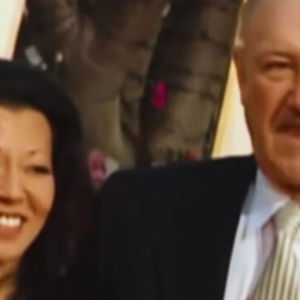When Bob & Carol & Ted & Alice premiered, it made waves with its daring exploration of relationships and modern marriage. Its provocative approach got everyone talking, but many missed a subtle choice surrounding Natalie Wood, designed to conceal a deeply personal secret.
Released in 1969, the film was revolutionary for its time, tackling taboo subjects like open relationships and fidelity with a sharp satirical lens. It wasn’t just entertainment—it was a reflection of the changing social norms of the late ’60s, challenging traditional ideas about love and commitment.
Central to the film’s impact was its talented cast, particularly Natalie Wood. Already a celebrated Hollywood star, Wood brought her signature poise and emotional depth to the role of Carol. Her nuanced performance added authenticity to the film, making its complex themes more relatable to audiences navigating their own shifting views on love and relationships.

The success of Bob & Carol & Ted & Alice owed as much to Natalie Wood’s brilliance as it did to the stellar performances of her co-stars, Robert Culp, Elliott Gould, and Dyan Cannon, who brought depth, humor, and emotional authenticity to the roles of Bob, Ted, and Alice. Their collective effort elevated the film to iconic status.
Behind the Scenes: A Film That Broke Boundaries
Looking behind the curtain, the journey from script to screen for this provocative film was anything but ordinary. Earning four Academy Award nominations, Bob & Carol & Ted & Alice (BCTA) was a standout in director Paul Mazursky’s career and a hallmark of the New Hollywood movement, a period in the late ’60s and ’70s when filmmakers shifted from studio-controlled productions to bold, director-driven stories tackling taboo subjects.
The inspiration for the film came from a Time magazine article Mazursky read about Fritz Perls, a gestalt therapist enjoying a naked hot tub session at the Esalen Institute in Big Sur, California—a haven for New Age therapy since its founding in 1962. Mazursky and his wife decided to visit, where they found themselves in the midst of strangers engaged in group therapy and self-exploration. After experiencing Esalen and collaborating with writer Larry Tucker in Palm Springs, Mazursky penned the script for this groundbreaking comedy.
Mazursky’s Nervous Start as a Director
Directing his first film was daunting for Mazursky, and his first day on set quickly turned into a nightmare. Faced with 75 crew members awaiting his instructions, he froze. Fortunately, cinematographer Charles Lang stepped in, suggesting they take a crane ride to discuss the opening shot. Though terrified of heights, Mazursky agreed. Once airborne, Lang calmly guided him, helping Mazursky regain his composure and confidence. By the time they descended, Mazursky was ready to lead—and as he later joked, he became a “cocky little bastard” from that point on.
Natalie Wood’s Stunning Return
The film also marked Natalie Wood’s return to acting after a three-year hiatus. Her performance as Carol remains one of her most iconic, but it didn’t immediately reignite her career. After filming BCTA in 1968, Wood took another lengthy break from feature films, not returning until Peeper in 1975.
The Hidden Detail on Wood’s Left Wrist
A subtle yet personal detail in the film is the bracelet on Natalie Wood’s left wrist. This accessory concealed a lifelong injury from her childhood. At age 10, while filming The Green Promise, she fell from a collapsing bridge and broke her wrist. The injury left a slight deformity, which Wood, embarrassed by the scar, discreetly hid throughout her career with carefully chosen jewelry.
Bob & Carol & Ted & Alice remains a landmark film, not just for its bold themes but for the rich stories and personalities behind its creation.

To conceal her wrist injury, Natalie Wood made a habit of always wearing a bracelet, ensuring the imperfection was never visible. In fact, it’s rare to find a photo of her without this signature accessory.
Spotting Leif Garrett’s Debut
Did you know that teen idol Leif Garrett’s very first film role was in Bob & Carol & Ted & Alice? Years before becoming a ’70s pop star and heartthrob, Garrett made his cinematic debut in the 1969 hit. At just 5 years old, he appeared in the movie, which went on to become the fifth highest-grossing film of the year.
Cameos You Might Miss
The film also features some blink-and-you’ll-miss-it cameos, including one by Bill Cosby. You can catch him briefly in the nightclub scene, sporting a hat, a red shirt, and sunglasses. He bumps into Bob as the group heads to their table—a fun Easter egg for sharp-eyed viewers.
If you’re watching closely, you might notice Donald F. Muhich in the role of Alice’s therapist. What makes this cameo unique is that Muhich was Paul Mazursky’s real-life therapist—talk about art imitating life! And don’t miss the man shouting in the background at the Esalen Institute—that’s Mazursky himself making a brief on-screen appearance.
Natalie Wood’s Wardrobe
Natalie Wood was a style icon, whether gracing red carpets, attending concerts, or making casual appearances. Her impeccable fashion sense seamlessly blended Hollywood glamour with an approachable charm, a quality that shone in Bob & Carol & Ted & Alice.
The film’s wardrobe, designed by the legendary Moss Mabry, captured the essence of late ’60s fashion. From relaxed bohemian outfits to sophisticated, polished ensembles, Natalie’s costumes reflected her ability to be both iconic and relatable. Mabry even designed a custom bra specifically for her, which became known as the “Natalie Wood bra.” The details of its unique design, however, remain a well-kept secret.
Dyan Cannon’s Comeback
Dyan Cannon also made a notable return to the big screen in Bob & Carol & Ted & Alice. Her comeback followed a challenging period in her personal life, including a highly publicized divorce from Cary Grant. The tumultuous split involved allegations of erratic behavior on Grant’s part, reportedly linked to his LSD use, as well as a contentious custody battle for their daughter. Although Cannon sought full custody, the legal battle left her financially strained. Her performance in the film marked a triumphant return to her career after a difficult chapter.

Dyan Cannon was determined to bounce back from the hardships in her personal life, and Bob & Carol & Ted & Alice provided the perfect opportunity. Her role as Alice Henderson marked a pivotal moment in her career, which she embraced with newfound resolve.
“For eight months, I couldn’t do anything. I was too stunned, too confused, and upset over what had happened,” she told the Associated Press in 1968. “Then one day, something inside me clicked. I realized I wasn’t going to get anywhere sitting around feeling sorry for myself—it was time to get out and get busy.”
Spotting Goofs in BCTA
Like most films, Bob & Carol & Ted & Alice has its share of continuity errors. In one scene, Alice and Ted are shown enjoying their desserts at a restaurant, only for the next shot to show the desserts being served to them again. Later, Bob plays a record at a party, but when the music continues, the record player is clearly spinning with no record on it.
Another noticeable error occurs during Carol’s confession about her affair. Bob moves toward the stairs wearing his topcoat, but in the very next shot, the coat is off and Carol is suddenly holding it. These little slip-ups don’t detract from the film but instead add a quirky charm.
Improvisation in the Iconic Bed Scene
One of the film’s most iconic scenes—a moment where all four characters are tossed into the bed—was largely unscripted. Director Paul Mazursky aimed for a raw, unpolished performance and gave the actors free rein to improvise. While Robert Culp, playing Bob, seemed at ease in the chaotic scenario, Natalie Wood, Elliott Gould, and Dyan Cannon initially hesitated, unsure of how to proceed. Critics later praised the scene for its authentic and spontaneous energy.
A Bittersweet Legacy
For Natalie Wood, Bob & Carol & Ted & Alice marked a turning point, but also a bittersweet chapter. After the film’s success, she stepped back from acting, taking a hiatus that lasted several years. Sadly, this would be her last major movie before her untimely death in 1981.
While the film captured the carefree and boundary-pushing spirit of the 1960s, Wood’s personal life remained far more complex, her career overshadowed by tragedy. Yet her role in the film stands as a testament to her immense talent and timeless appeal, forever securing her place in cinematic history.
Share this article to celebrate Natalie Wood’s legacy and the enduring impact of Bob & Carol & Ted & Alice!




